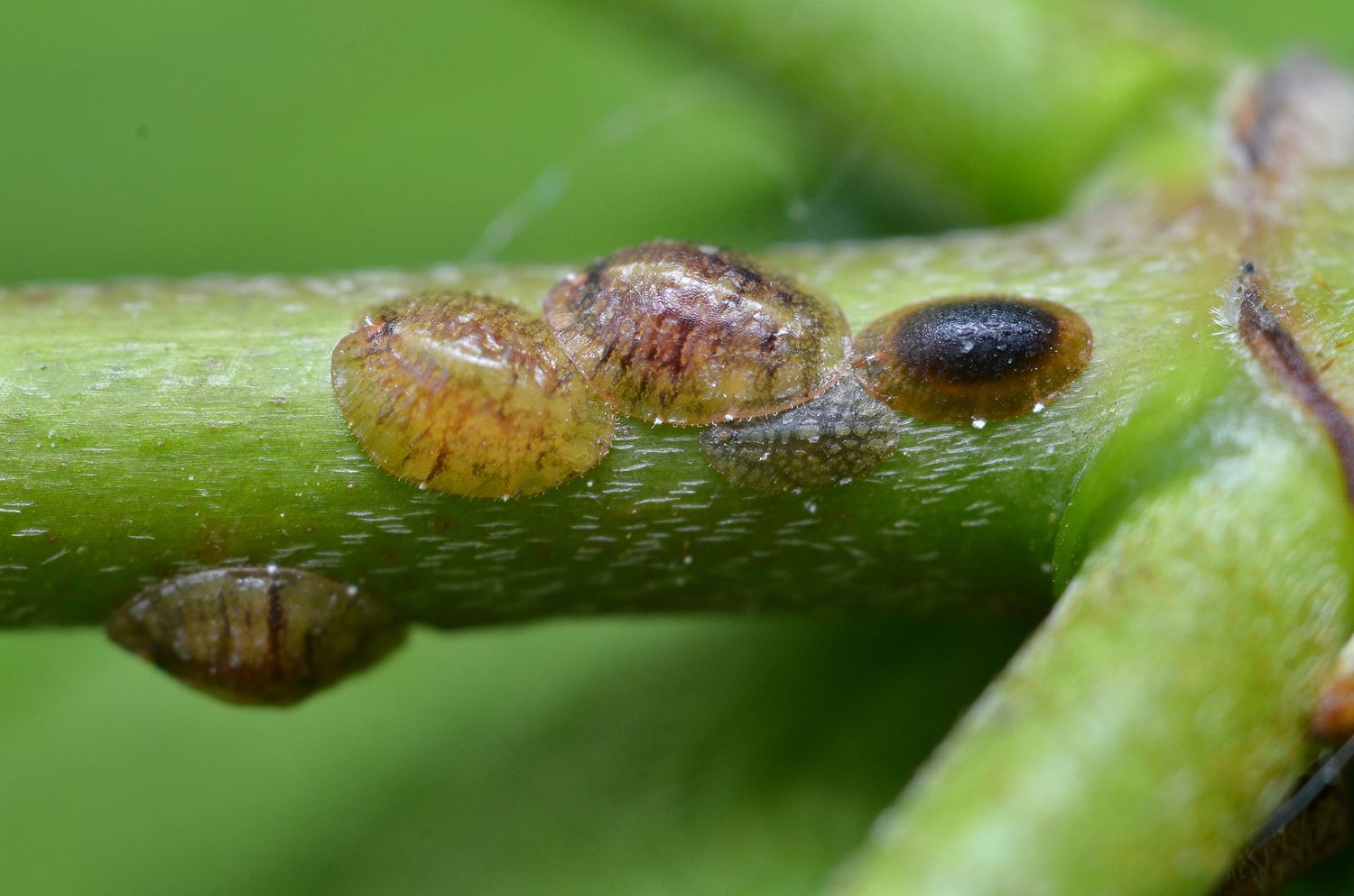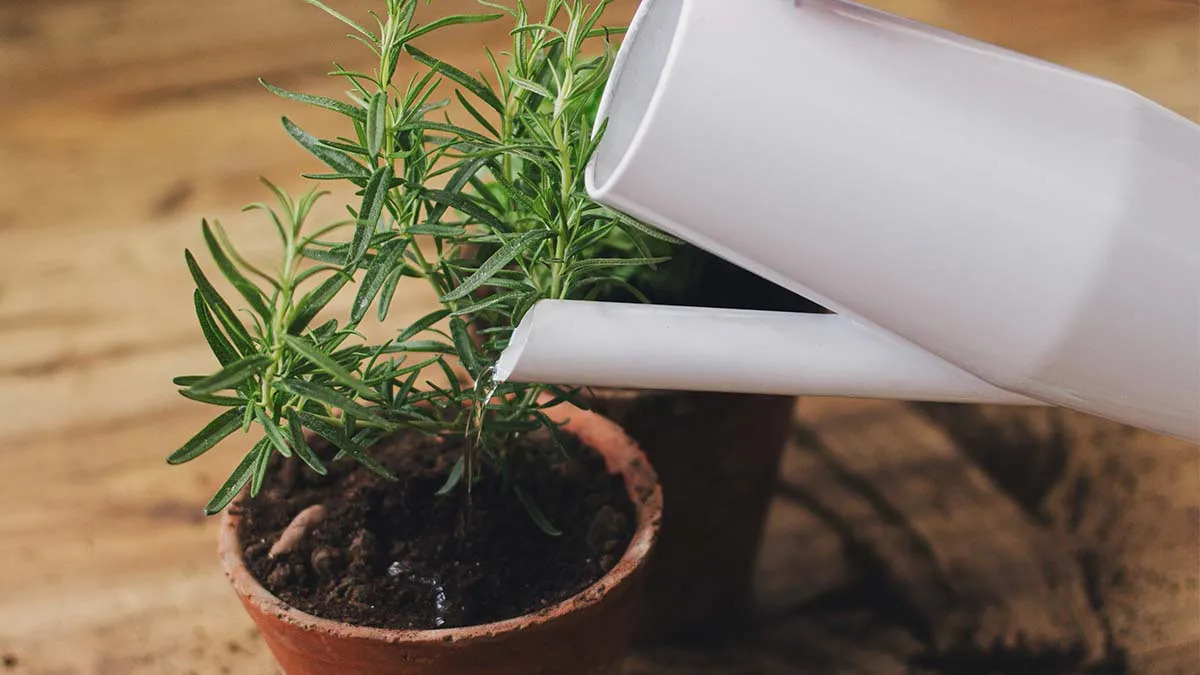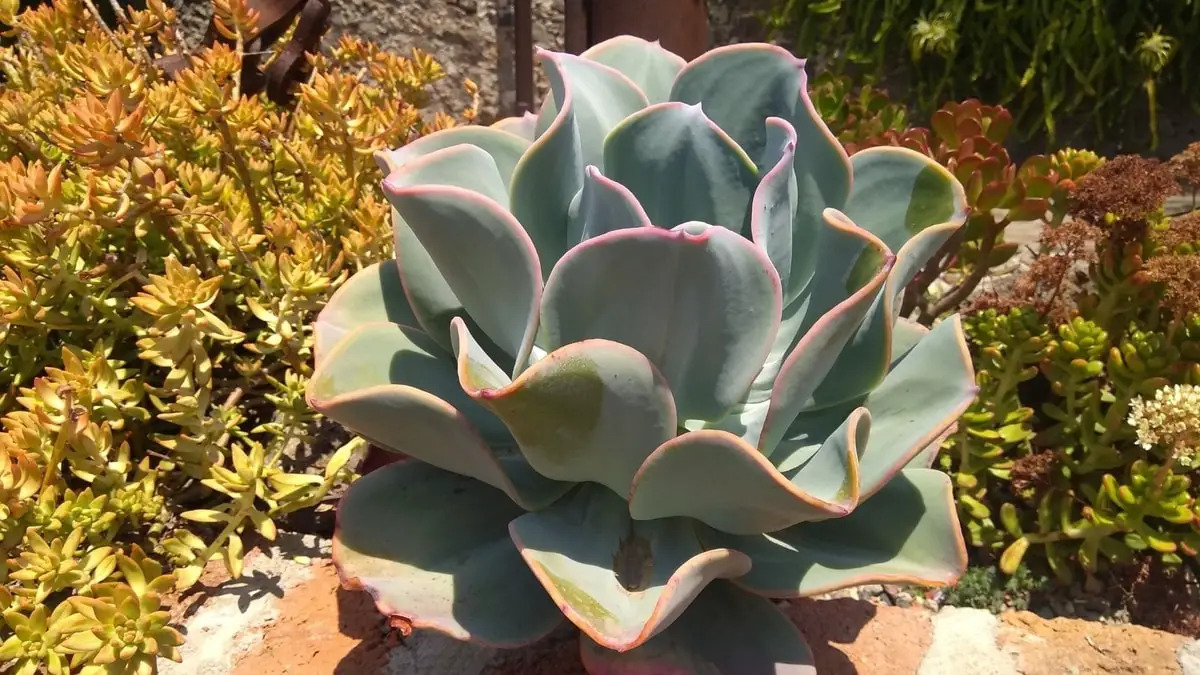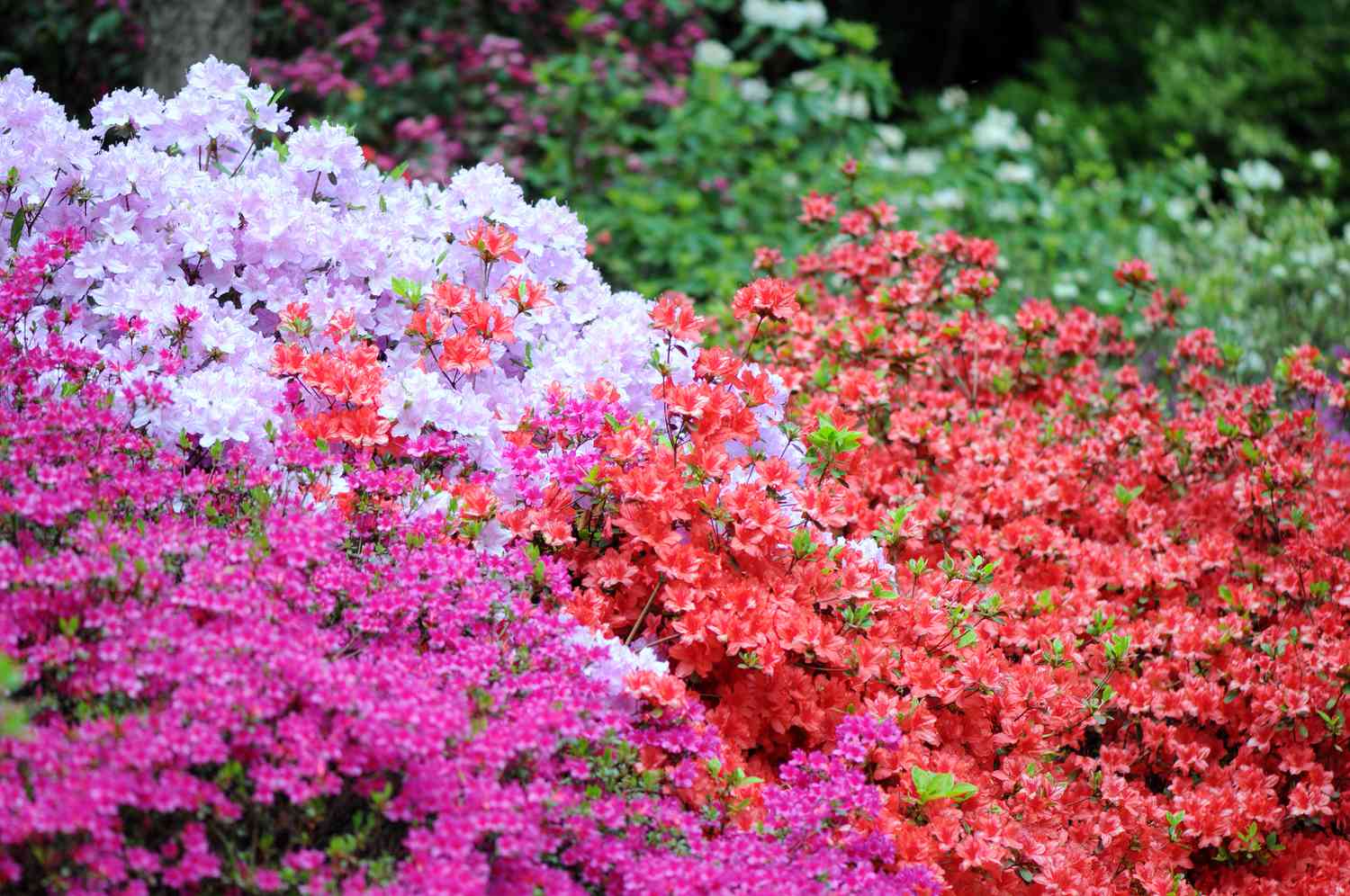Home>Gardening News and Trends>Latest News>How Do Insects Help Plants Grow
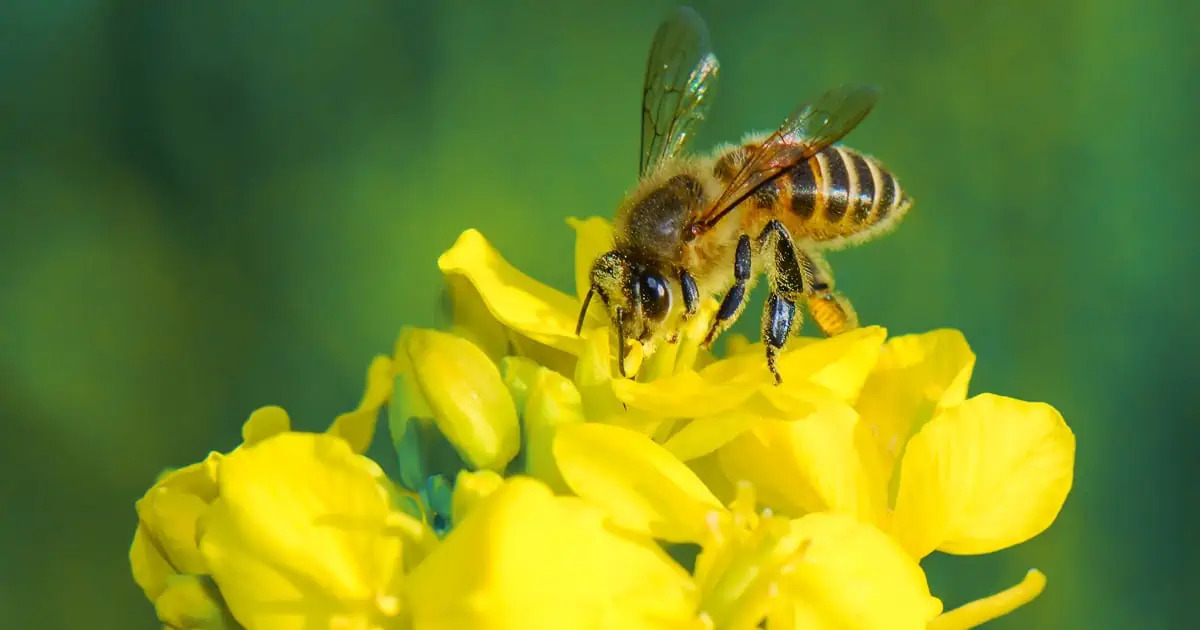

Latest News
How Do Insects Help Plants Grow
Modified: January 22, 2024
Discover the latest news on how insects play a crucial role in the growth and development of plants. Explore how these tiny creatures aid in pollination and natural pest control.
(Many of the links in this article redirect to a specific reviewed product. Your purchase of these products through affiliate links helps to generate commission for Chicagolandgardening.com, at no extra cost. Learn more)
Table of Contents
Introduction
Insects and plants have a fascinating relationship that goes far beyond what meets the eye. While insects are often viewed as pests or nuisances, they play a vital role in the growth and survival of plants. These tiny creatures, through various interactions, help plants in numerous ways, ranging from pollination to pest control. Understanding the mutualistic relationship between insects and plants can shed light on the intricate workings of nature and the delicate balance that exists within ecosystems.
Plants have evolved over millions of years to rely on insects for their reproduction, nutrient cycling, and defense against pests. In return, insects benefit from the resources provided by plants, such as nectar, pollen, and shelter. This mutually beneficial interaction, known as mutualism, has allowed both plants and insects to thrive and adapt in a world filled with constant challenges.
In this article, we will explore the ways in which insects contribute to the growth and development of plants. We will delve into the fascinating world of insect pollination, where insects inadvertently facilitate the transfer of pollen from the male reproductive organs of one flower to the female reproductive organs of another. We’ll also discover how insects aid in seed dispersal, ensuring the spread and survival of plant species.
Additionally, we will explore the role of insects in pest control. While some insects may be considered pests themselves, there are many beneficial insects that act as natural predators, keeping pest populations in check. Lastly, we will discuss how insects contribute to nutrient recycling and soil health, performing the vital task of breaking down organic matter and returning nutrients to the ecosystem.
By gaining a deeper understanding of the intricate relationship between insects and plants, we can develop a greater appreciation for these tiny creatures and the vital role they play in maintaining the health and biodiversity of our natural world. Join us as we uncover the hidden wonders of insects and their invaluable contributions to the growth and prosperity of plants.
Mutualistic Relationships Between Insects and Plants
Mutualism is a fundamental ecological concept that refers to the mutually beneficial relationship between two different species. When it comes to insects and plants, this mutualistic relationship is incredibly diverse and plays a crucial role in the survival and reproduction of both organisms.
One of the most well-known mutualistic interactions between insects and plants is pollination. As insects move from flower to flower in search of nectar or pollen, they inadvertently facilitate the transfer of pollen grains between the male and female parts of a flower. This transfer of pollen is essential for the production of seeds and the continuation of plant species. Insects such as bees, butterflies, and hummingbirds are particularly effective pollinators due to their feeding habits and body structures that allow them to carry and transfer pollen efficiently. In return for their pollination services, insects receive a nutritious food source in the form of nectar, which is produced by plants to attract pollinators.
In addition to pollination, insects also contribute to seed dispersal. After plants have produced seeds, insects play a vital role in carrying these seeds away from the parent plant to new locations. Some insects, such as ants, collect seeds and store them in underground chambers, allowing for seed germination and dispersal. Other insects, like beetles and birds, consume fruits or seeds and excrete them in different areas, aiding in the dispersal and colonization of plant species. This dispersal mechanism ensures the survival and genetic diversity of plant populations.
Moreover, insects act as important biocontrol agents in the natural environment. While some insects may be considered pests for damaging crops or garden plants, there are many beneficial insects that help keep pest populations in check. Ladybugs, lacewings, and parasitic wasps are just a few examples of insects that prey on harmful pests like aphids, mites, and caterpillars. By reducing the number of pests, these beneficial insects contribute to the overall health and productivity of plants.
Furthermore, insects play a vital role in nutrient cycling and soil health. Decomposer insects, such as dung beetles and detritivores, break down organic matter like dead animals and leaves, returning nutrients to the soil. This process of decomposition facilitates the recycling of vital nutrients, making them available for plant uptake and growth. Insects also aid in soil aeration through their burrowing activities, enhancing soil structure and promoting root growth.
The mutualistic relationships between insects and plants are complex and diverse, encompassing a wide range of interactions that benefit both parties involved. Through pollination, seed dispersal, pest control, and nutrient recycling, insects contribute to the growth, reproduction, and overall health of plants. Understanding and appreciating these mutualistic relationships is crucial for conservation efforts, as the loss of insect populations can have far-reaching consequences for ecosystems and plant communities.
Insect Pollination
Insect pollination is a vital process that allows plants to reproduce and produce seeds. Many flowering plants have evolved to depend on insects for the transfer of pollen, which contains the plant’s male reproductive cells. As insects move from flower to flower in search of nectar or pollen, they inadvertently collect and transport pollen grains, aiding in the fertilization of plants.
The process of insect pollination begins when an insect visits a flower in search of a food source, such as nectar. During this visit, the insect’s body comes into contact with the reproductive structures of the flower, including the anthers, which are the male organs that produce pollen. As the insect moves from flower to flower, some of the pollen grains stick to its body, including the hairs, legs, or mouthparts.
When the insect visits another flower, some of the pollen grains that are stuck to its body are deposited onto the stigma, which is the female reproductive organ of the flower. This transfer of pollen enables the fertilization of the ovules within the flower, leading to the development of seeds. Without insect pollinators, many plant species would struggle to reproduce and eventually decline in numbers.
Insects, such as bees, butterflies, moths, and flies, are particularly effective pollinators due to their feeding habits and body structures. For example, bees have specialized body hairs that allow them to collect and carry large quantities of pollen. As they visit flowers to collect nectar, the pollen grains adhere to their hairy bodies, increasing the chances of successful pollen transfer.
Butterflies and moths, on the other hand, have long mouthparts that allow them to reach deep into flowers, accessing nectar while inadvertently brushing against the reproductive structures. Flies may also play a role in pollination, especially in plant species that produce foul-smelling flowers that attract these scavenging insects.
Insect pollination is crucial for both wild and cultivated plants. In agricultural systems, insect pollinators are essential for the production of many food crops, including fruits, vegetables, nuts, and oilseeds. It is estimated that approximately 75% of the world’s flowering plants and around 35% of global food crops are dependent on insect pollinators.
However, pollinators face numerous challenges that threaten their populations and the vital ecosystem services they provide. Habitat loss, pesticide use, climate change, and the spread of diseases all contribute to the decline of pollinator populations. These declines have significant implications not only for plant reproduction but also for biodiversity, food security, and ecosystem stability.
Efforts to protect and conserve insect pollinators are crucial for maintaining healthy ecosystems. Creating and preserving pollinator-friendly habitats, reducing the use of pesticides, and raising awareness about the value of pollinators are all important steps towards safeguarding these critical ecological interactions.
Seed Dispersal by Insects
Seed dispersal is a vital process in the life cycle of plants, as it ensures the spread and colonization of plant species in different areas. While wind, water, and animals all play a role in seed dispersal, insects are particularly important agents in this process. Through various mechanisms, insects aid in the dispersal of plant seeds, allowing for the establishment of new populations.
One way in which insects contribute to seed dispersal is through their interaction with fruits. Many plant species produce fleshy fruits that entice insects with their bright colors and sweet juices. Insects are attracted to these fruits as a source of food, and as they consume the flesh or juice, they inadvertently ingest the seeds. The seeds are then transported within the insect’s digestive system and deposited in a different location as the insect moves and defecates, effectively dispersing the seeds away from the parent plant. This process is known as endozoochory, or internal seed dispersal.
Ants also play a significant role in seed dispersal, particularly in forests and grasslands. Some plant species have co-evolved with ants, producing specialized structures called elaiosomes, which are nutrient-rich appendages attached to the seeds. Ants are attracted to these elaiosomes and carry the seeds back to their nests. They consume the elaiosomes, effectively “planting” the seeds in nutrient-rich environments within the ant nests. This mutualistic relationship benefits both the ants, who gain nutrients from the elaiosomes, and the plants, which have their seeds dispersed and protected by the ants.
In addition to endozoochory and ant dispersal, insects also aid in seed dispersal through external means. Some plant species produce seeds with specialized structures, such as hooks, barbs, or spines that easily attach to the bodies of passing insects. As the insects move through their environment, these seeds become dislodged and are carried to new locations. This form of dispersal, known as epizoochory, allows for the wide dispersal of seeds across different habitats and landscapes.
The role of insects in seed dispersal is particularly important in areas with fragmented habitats or disturbed ecosystems. In these environments, where natural seed dispersal mechanisms may be compromised, insects can be crucial in maintaining plant biodiversity and supporting ecosystem resilience.
However, just like pollinators, seed-dispersing insects also face threats that can impact their populations. Habitat loss, pesticide use, and climate change can disrupt the natural processes of seed dispersal, leading to a decline in plant species diversity and ecosystem functioning.
Efforts to conserve and protect seed-dispersing insects are essential for maintaining healthy ecosystems. Restoring and preserving habitats that support insect diversity, reducing pesticide use, and promoting the planting of native plant species are important steps towards preserving the vital role of insects in seed dispersal and the overall health of natural ecosystems.
Pest Control by Insects
When we think about insects and their impact on plants, it’s often associated with pests that can cause damage to crops, gardens, or ornamental plants. However, it’s important to recognize that insects also play a crucial role in natural pest control. Many beneficial insects act as natural predators, helping to keep pest populations in check and reducing the need for chemical insecticides.
One group of beneficial insects that contributes to pest control is predatory insects. These predators feed on herbivorous insects, such as aphids, caterpillars, and mites, which can be destructive to plants. Ladybugs, lacewings, and predatory beetles are examples of predatory insects that actively hunt and consume pest insects. They help to regulate pest populations by feeding on their eggs, larvae, or adult stages, preventing them from reaching damaging levels. This natural form of pest control is not only effective but also environmentally friendly, as it reduces the reliance on synthetic pesticides.
Parasitic insects are another group of beneficial insects that contribute to pest control. These insects lay their eggs on or inside pest insects, and the resulting larvae feed and develop within the host, eventually killing them. Parasitic wasps, for example, are tiny insects that lay their eggs inside or on the bodies of caterpillars or other pest insects. The wasp larvae consume the host from within, effectively eliminating the pest. This form of biological control is highly specific, targeting only the pest species and minimizing harm to beneficial organisms and the wider environment.
In addition to predatory and parasitic insects, certain insects also assist in pest control through their feeding habits. For example, some birds, such as swallows and warblers, feed on insects and can help control pest populations in agricultural settings. Bats, too, consume large quantities of flying insects, including agricultural pests like moths and beetles. By reducing the numbers of these pests, these insectivorous birds and bats provide a natural form of pest control.
Encouraging the presence of beneficial insects in agricultural and garden settings can be achieved through various practices known as integrated pest management (IPM). IPM focuses on creating a habitat that supports beneficial insects by providing them with suitable food sources, water, and shelter. Planting diverse flowering plants, using cover crops, and minimizing the use of broad-spectrum insecticides are some strategies that promote the presence of beneficial insects and enhance natural pest control.
While the use of synthetic pesticides may be necessary in certain situations, relying solely on these chemicals can have detrimental consequences. Pesticides not only harm the targeted pests but can also harm beneficial insects, disrupt the balance of ecosystems, and contribute to pesticide resistance in pest populations. Therefore, promoting natural pest control through the conservation and enhancement of beneficial insects is a sustainable and eco-friendly approach to managing pest problems.
Insects as Nutrient Recyclers
Insects play a crucial role in nutrient cycling and the recycling of organic matter in ecosystems. These small creatures are efficient decomposers, breaking down dead plants, animals, and other organic material and returning essential nutrients back into the environment.
When animals and plants die, their remains can accumulate and become a potential source of waste. Insects, particularly detritivores and decomposers, are responsible for breaking down this organic matter. They feed on dead plant material, fallen leaves, dead animals, and feces, breaking them into smaller pieces. They accelerate the decomposition process by introducing enzymes and bacteria into the organic matter, facilitating its breakdown and decomposition.
By breaking down organic matter, insects convert complex molecules into simpler forms that can be readily absorbed by plants and microbes. These simplified forms of nutrients, such as nitrogen, phosphorus, and carbon, are then released back into the soil, where they become available for plant uptake. As a result, insects play a crucial role in nutrient cycling, ensuring that essential elements are continuously recycled within ecosystems.
Some insects, such as dung beetles, have specialized roles in the decomposer community. Dung beetles, for example, feed on animal feces, helping to break it down and scatter it throughout the environment. By burying dung underground, they not only aid in nutrient recycling but also help control the spread of diseases and reduce the breeding habitat for flies and other pests.
In addition to their role in decomposing organic matter, insects also contribute to soil health and fertility. As they tunnel and burrow through the soil, insects increase soil aeration, allowing oxygen to reach plant roots and facilitating nutrient uptake. The movement of insects also promotes the mixing of organic matter with the mineral components of the soil, enhancing soil structure and fertility.
Furthermore, the excrement of many insects, commonly known as frass, adds essential nutrients back into the ecosystem. Insects like caterpillars and grasshoppers feed on plant material and produce frass that contains nitrogen, carbon, and micronutrients. This frass, when deposited onto the soil surface, enriches the soil and provides a slow-release source of nutrients for plants.
Insects as nutrient recyclers are important contributors to the health and productivity of ecosystems. Without their active role in decomposing organic matter and returning essential nutrients to the environment, the nutrient cycle would be disrupted, and plants would struggle to access the necessary resources for growth and development.
Understanding the vital role of insects as nutrient recyclers highlights the importance of conserving insect populations and their habitats. Practices such as reducing the use of synthetic pesticides, maintaining natural areas and biodiversity, and promoting sustainable agricultural practices can all contribute to the preservation of these essential ecosystem services provided by insects.
Conclusion
Insects and plants have a remarkable and intricate relationship that goes beyond what meets the eye. While insects are often seen as pests, they are essential contributors to the growth, reproduction, and overall health of plants. Through mutualistic interactions, insects assist in various critical processes, including pollination, seed dispersal, pest control, and nutrient recycling.
Insect pollination is fundamental for the reproduction of many plant species, enabling the transfer of pollen and the production of seeds. Bees, butterflies, and other insects inadvertently facilitate this process as they move from flower to flower in search of nectar and pollen. The result is the continued survival and diversity of plant species, as well as the production of fruits and seeds that sustain both wildlife and humans.
Seed dispersal by insects is another vital mechanism for the colonization and survival of plant populations. By consuming fruits or carrying seeds on their bodies, insects facilitate the dispersal of seeds to different locations, ensuring the genetic diversity and the expansion of plant species.
Moreover, insects play a crucial role in pest control by acting as natural predators and parasitoids, feeding on harmful insects and reducing their populations. Beneficial insects like ladybugs and parasitic wasps help maintain a balance in ecosystems, preventing pest outbreaks and reducing the need for chemical pesticides.
In addition, insects contribute to nutrient cycling and soil health. They decompose organic matter, breaking it down into simpler forms and releasing essential nutrients back into the ecosystem. By doing so, insects ensure the availability of nutrients for plant growth and the overall fertility of the soil.
Understanding and appreciating the vital role of insects in the growth and prosperity of plants is crucial for biodiversity conservation and sustainable ecosystem management. Protecting and conserving insect populations, preserving their habitats, and promoting practices such as integrated pest management and sustainable agriculture are key initiatives in maintaining the delicate balance of nature.
Next time you see an insect buzzing around or crawling on a plant, take a moment to marvel at the intricate symbiotic relationship that exists between these two life forms. Insects are not just pests; they are essential partners in the amazing journey of plant life. By working hand in hand with plants, insects ensure their survival, encourage biodiversity, and ultimately contribute to the health and well-being of our planet.

